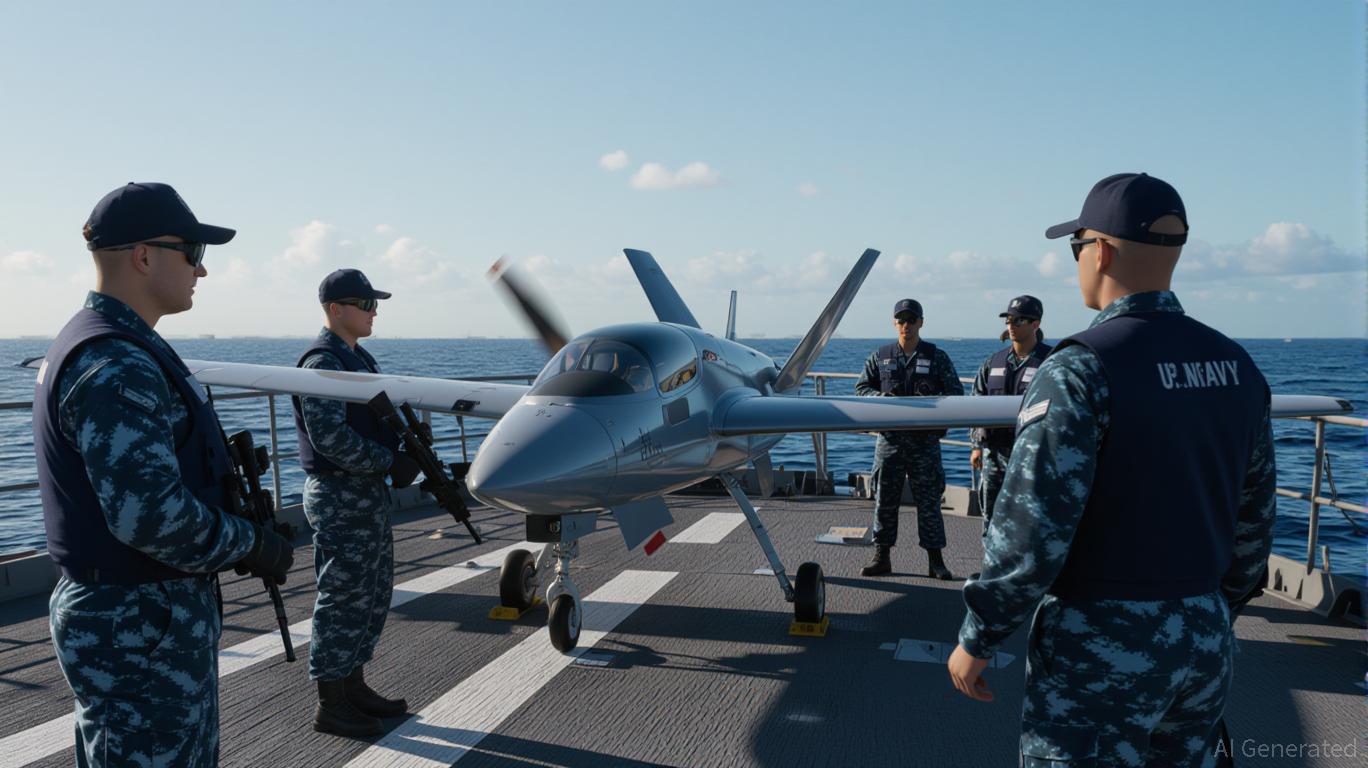The Asia-Pacific region is at the epicenter of a rapidly evolving geopolitical landscape, marked by escalating naval exercises, border disputes, and strategic realignments. From China’s assertive maritime claims to India’s pivot toward Russian energy imports and the U.S.’s tariff-driven trade policies, the region is witnessing a surge in defense spending and technological innovation. For investors, this dynamic environment presents a unique opportunity to assess the strategic value of defense contractors and maritime technology firms, many of which are poised to benefit from heightened regional instability.
The Geopolitical Catalyst: Tensions Fueling Defense Demand
Recent developments underscore the fragility of the Asia-Pacific’s strategic balance. China’s deepening ties with Russia, India’s defiance of U.S. energy policies, and the U.S.’s “no-limits” partnership with China are reshaping alliances and fueling defense budgets. Naval activities have intensified, with Japan deploying U.S.-made drones for 40-hour-long surveillance missions, India acquiring MQ-9B Sky Guardian drones for maritime domain awareness, and China expanding its Belt and Road Initiative-linked port security infrastructure.
These actions are not just symbolic—they translate into concrete demand for advanced maritime technologies. The global maritime security market, valued at $32.67 billion in 2023, is projected to grow to $49.49 billion by 2032, with the Asia-Pacific accounting for 56.69% of the market share. Key players are investing in AI-driven surveillance, unmanned systems, and cybersecurity to counter threats ranging from piracy to illegal fishing.
Strategic Value of Defense Contractors: A Closer Look
Defense stocks in the region have shown sensitivity to geopolitical shifts. For instance, Raytheon Technologies (RTX) has emerged as a critical player in missile defense systems, securing contracts with Japan and Australia to upgrade their anti-missile capabilities. In Q2 2025, RTX reported 17.15% year-over-year revenue growth, driven by its Hypersonic Attack Cruise Missile (HACM) program and HIMARS rocket systems. However, its high P/E ratio of 36.49 reflects both strong demand and investor caution about U.S. budget constraints.
Lockheed Martin (LMT) is another standout, with its F-35 fighter jet program and hypersonic weapons contracts. Japan’s procurement of $1.2 billion in F-35A jets and Australia’s AUKUS partnership have bolstered LMT’s backlog. The company’s 4% revenue growth in Q2 2025 and a P/E ratio of 21.19 suggest undervaluation relative to its $173 billion order book. Yet, production delays and geopolitical uncertainties could temper its long-term performance.
For maritime technology firms, General Dynamics (GD) is capitalizing on the $368 billion Australia submarine deal. GD’s Virginia-class submarines and AUKUS collaboration position it as a key beneficiary of the Indo-Pacific’s shift toward undersea dominance. The company’s 12.88% revenue growth in 2024 and a P/E of 20.45 highlight its potential, though supply chain bottlenecks remain a risk.
Cybersecurity and AI: The New Frontiers
As digitalization transforms maritime operations, cybersecurity and AI-driven analytics are gaining prominence. Booz Allen Hamilton (BAH), a leader in AI and cyber solutions, has seen 18% year-over-year revenue growth in Q2 2025, with adjusted EBITDA rising 25.2% to $364 million. Its contracts with Japan’s Self-Defense Forces and U.S. agencies underscore the growing need for cyber resilience in military networks. However, its reliance on government budgets—particularly U.S. contracts—introduces volatility.
Meanwhile, Elbit Systems and Kongsberg are advancing AI-powered marine tracking and threat detection systems. These firms are part of a $49.49 billion market poised to grow at a 4.5% CAGR through 2032, driven by real-time monitoring platforms and satellite tracking.
Investment Implications and Strategic Recommendations
The strategic value of defense and maritime tech stocks lies in their alignment with regional security priorities. For investors, the key is to balance high-growth opportunities with risk mitigation:
1. Overweight Raytheon (RTX) and General Dynamics (GD): Their undervalued multiples and critical contracts with Indo-Pacific allies make them attractive long-term plays.
2. Hold Lockheed Martin (LMT): Monitor F-35 production timelines and geopolitical developments before committing.
3. Position in Cybersecurity Leaders: Booz Allen Hamilton (BAH) offers a rare blend of growth and valuation discipline, though diversification is key.
The Road Ahead
The Asia-Pacific’s defense spending boom—projected to reach $632.2 billion in 2025—is a multi-year tailwind for defense and maritime tech firms. While risks like fiscal constraints and supply chain delays persist, the region’s trajectory toward autonomous defense spending ensures sustained demand. Investors should prioritize firms with strategic military contracts, local production capabilities, and cybersecurity integration.

In conclusion, the confluence of geopolitical tensions and technological innovation is reshaping the Asia-Pacific’s defense landscape. For those willing to navigate the volatility, the sector offers compelling opportunities for capital appreciation and long-term resilience.
